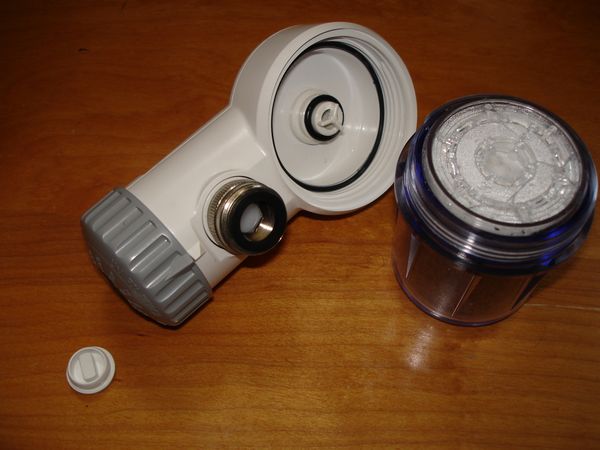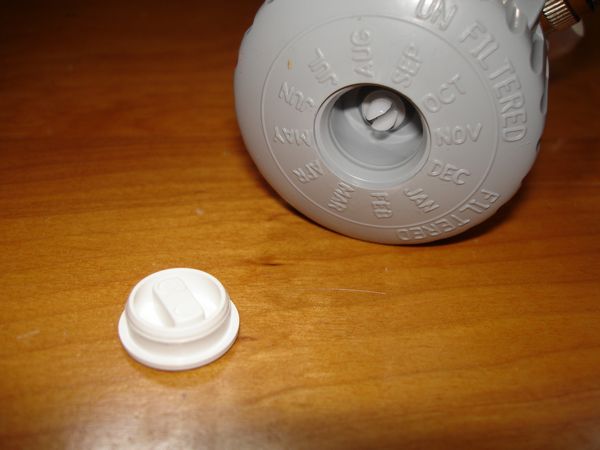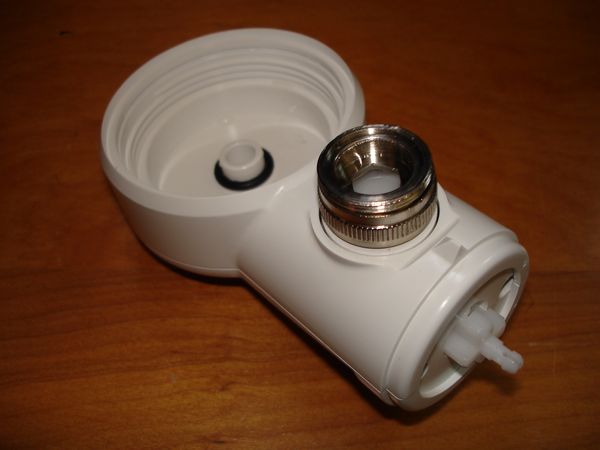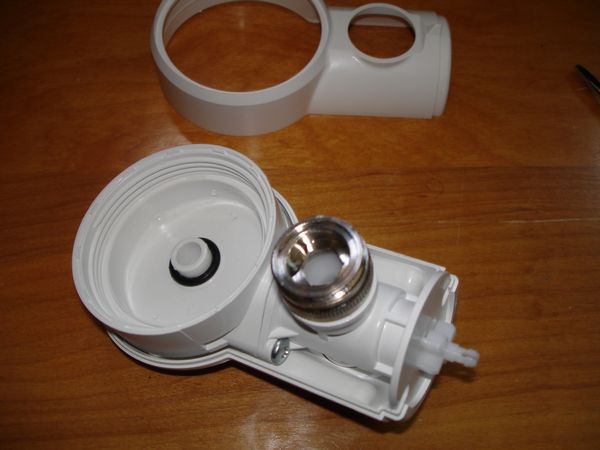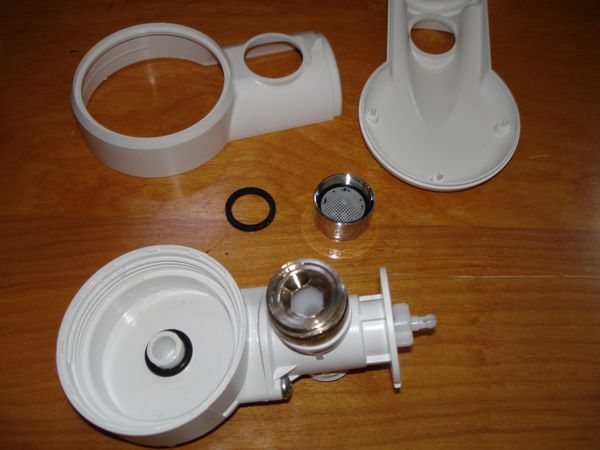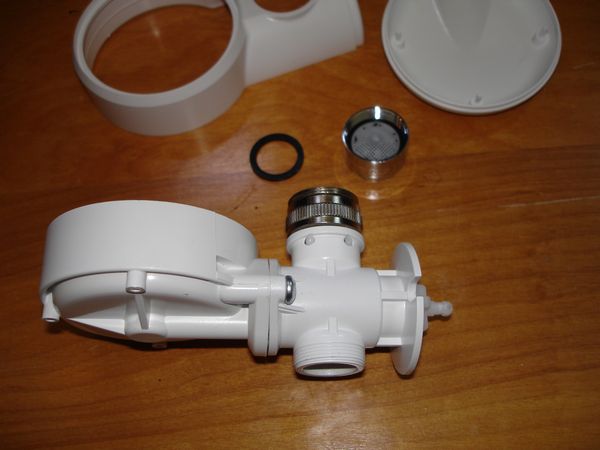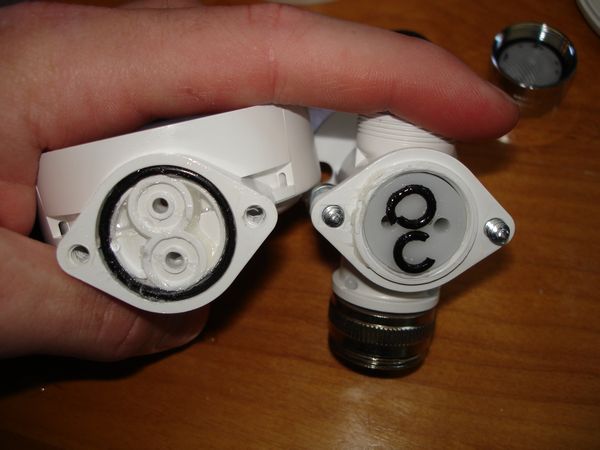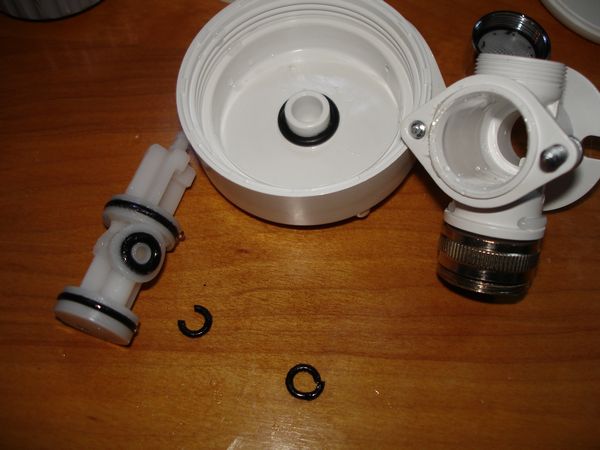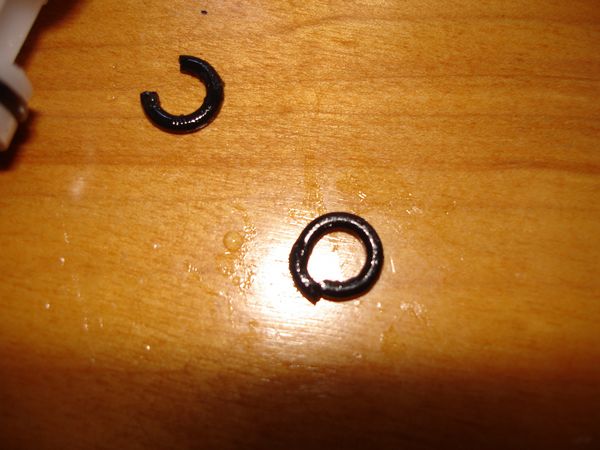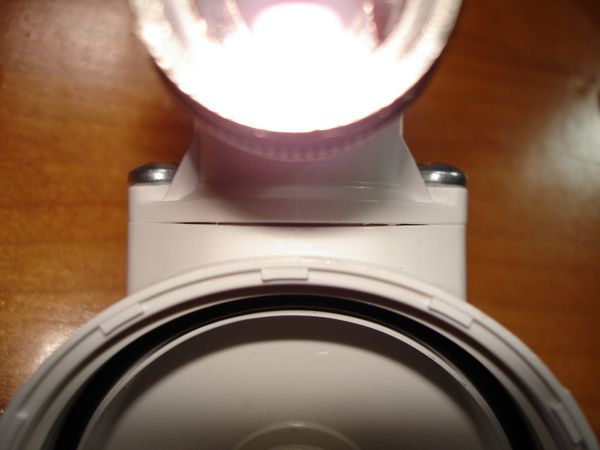| |||||
 |
OmniFilter Tear Down
*-* Click images for Huge PicturesForeword
I was searching for a new brand of water filter because I kept having PUR faucet mount filters fail. I purchased an OmniFilter from Menards and had it immediately start spraying water out the bottom. I was told to return it and try another from Menards by OmniFilter, so I did. The next filter destroyed the filter cartridge the first time I turned it on, and since Menards was clearancing them I didn't have much to lose so I decided to tear it apart and figure out what the deal is.
Looking below, you can see they have a very simple design, you spin the knob and you're just moving the pipe configuration to include or block the filter. The only issue is that whoever is assembling them isn't putting the o-rings in the correct location, and when they're assembled it's pinching the o-rings and causing the filter to either leak or not work at all. In the case with my first filter, the o-rings were in the incorrect location and allowing water to leak by them directly into the bottom of the filter. In the case of my more recent filter pictured below, the o-rings weren't moving with the knob and were smashed, which blocked water from exiting the filter. This resulted in highly compressible air being on the inside of the filter housing and water at 50+ psi being on the outside of the filter housing, which caused the filter to implode until water was able to leak by.
Ultimately, I think the o-ring seats aren't deep enough and are allowing the o-rings to move out of position when they're first assembled, also likely is that they're squishing into the hole as the knob is rotated and getting damaged. This filter was never actually used and they're already destroyed. If you look at the last picture you can see the parts aren't really ever assemblying and are just constantly squishing the o-rings.
Looking below, you can see they have a very simple design, you spin the knob and you're just moving the pipe configuration to include or block the filter. The only issue is that whoever is assembling them isn't putting the o-rings in the correct location, and when they're assembled it's pinching the o-rings and causing the filter to either leak or not work at all. In the case with my first filter, the o-rings were in the incorrect location and allowing water to leak by them directly into the bottom of the filter. In the case of my more recent filter pictured below, the o-rings weren't moving with the knob and were smashed, which blocked water from exiting the filter. This resulted in highly compressible air being on the inside of the filter housing and water at 50+ psi being on the outside of the filter housing, which caused the filter to implode until water was able to leak by.
Ultimately, I think the o-ring seats aren't deep enough and are allowing the o-rings to move out of position when they're first assembled, also likely is that they're squishing into the hole as the knob is rotated and getting damaged. This filter was never actually used and they're already destroyed. If you look at the last picture you can see the parts aren't really ever assemblying and are just constantly squishing the o-rings.
Image Notes
1. Remove filter
2. Screwdriver to pry out plug
3. Screwdriver behind knob to pop off the end
4. Remove housing top
5. Remove housing bottom
6. Side view of piping
7. O-rings in disassembled position, you can see the piece missing which is the one I found when removing the filter in the Mentions post
8. Removing diverter inner assembly, well designed.
9. Squished o-rings, you can see the one in the center is just about ready to go
10. I think what's really happening is the plastic base that the o-rings sit in isn't deep enough to properly seat the o-rings when they're assembled, you can clearly see the nice big gap here, this isn't going to be sustainable in the long run as stress will eventually break the plastic
1. Remove filter
2. Screwdriver to pry out plug
3. Screwdriver behind knob to pop off the end
4. Remove housing top
5. Remove housing bottom
6. Side view of piping
7. O-rings in disassembled position, you can see the piece missing which is the one I found when removing the filter in the Mentions post
8. Removing diverter inner assembly, well designed.
9. Squished o-rings, you can see the one in the center is just about ready to go
10. I think what's really happening is the plastic base that the o-rings sit in isn't deep enough to properly seat the o-rings when they're assembled, you can clearly see the nice big gap here, this isn't going to be sustainable in the long run as stress will eventually break the plastic





